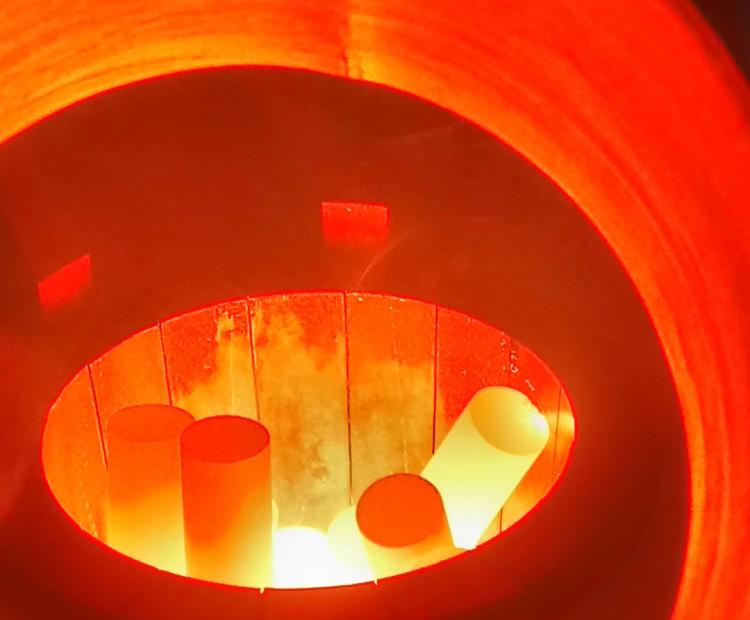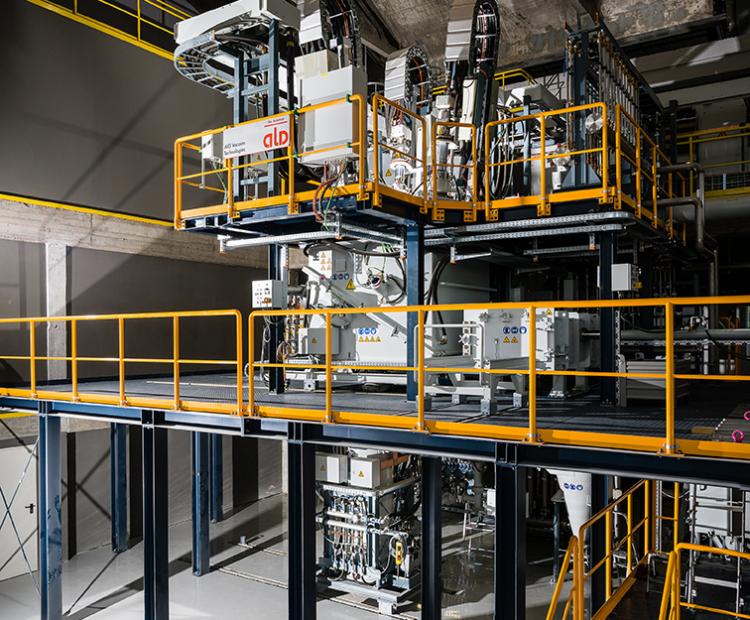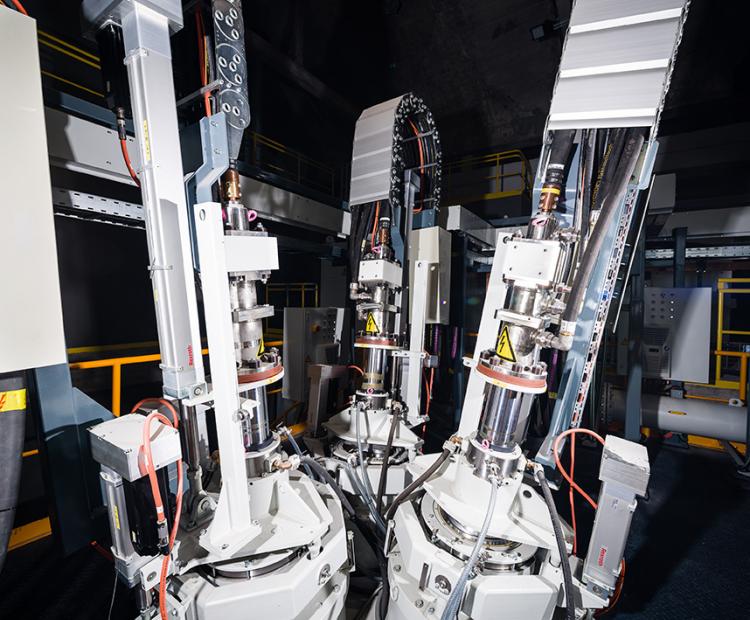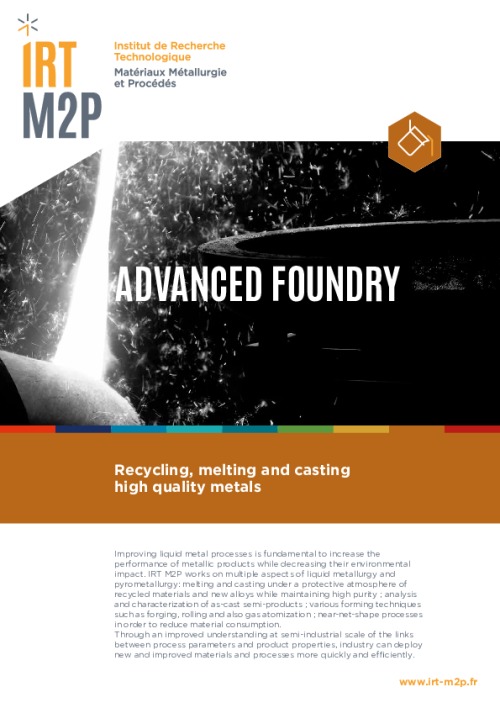Advanced foundry
Recycling, melting and casting high quality metals
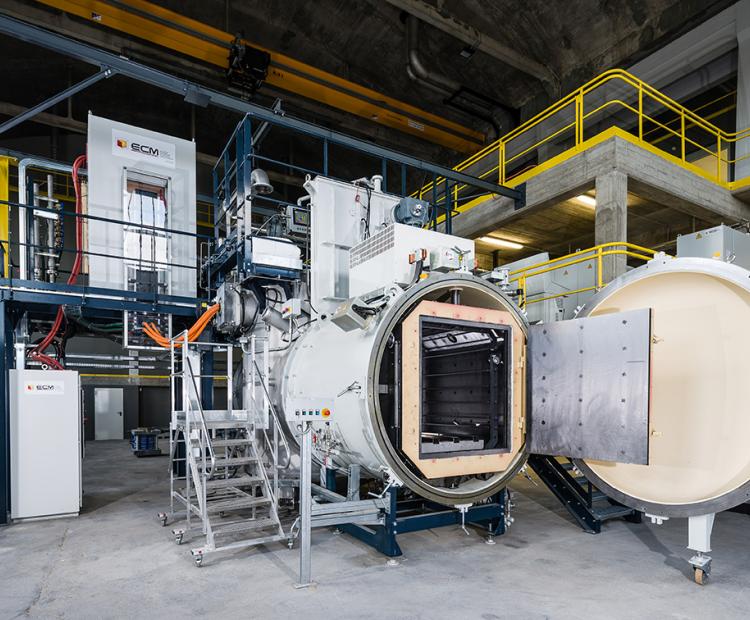
Improving liquid metal processes is fundamental to increase the performance of metallic products while decreasing their environmental impact.
IRT M2P works on multiple aspects of liquid metallurgy and pyrometallurgy: melting and casting under a protective atmosphere of recycled materials and new alloys while maintaining high purity ; analysis and characterization of as-cast semi-products ; various forming techniques such as forging, rolling and also gas atomization ; near-net-shape processes in order to reduce material consumption. Through an improved understanding at semi-industrial scale of the links between process parameters and product properties, industry can deploy new and improved materials and processes more quickly and efficiently.
Expertise & Services
Improving the recycling of metallic materials
- Link between scrap properties and as-cast metal quality
- Development of pyrometallurgical recycling processes that maintain metal quality
Melting, casting and atomization of any alloy under a protective atmosphere to ensure quality: Al, Fe, Ni, Cu, superalloys and reactive or refractory metals (Ti, Nb, Ta, etc.)
- Chemical analysis during melting
- Liquid metal/slag equilibrium measurements
- Studies on the kinetics of inclusion dissolution, metal cleanliness and inclusion/fatigue relationships
Wide variety of casting platforms: ingot, near-net-shape by sand or investment casting
Refractory/liquid metal corrosion studies
Access to various forming techniques such as forging, thixoforging, rolling or gas atomization
Small series or prototype production
Technical support for evaluating the industrial relevance of new melting and forming techniques
Analysis and characterization of liquid metal, as-cast or formed products and final products
Technology
Our processes allow the production of any type of alloy in various forms and quantities between 5 and 350 kg. In addition to the quality of the metals produced, the processes are 100% electric, allow the use of recycled materials and do not release pollutants into the atmosphere.
Induction melting
Melting under vacuum or protective atmosphere in refractory or cold-hearth crucibles
Various semi-products: ingots, bars and complex shapes including near-net-shape
Sensors in the furnace and moulds for data collection and modeling
High purity and low inclusion metals
Plasma arc melting
Cold-hearth refiner for melting/remelting refractory or reactive metals
Multi-parts crucible in order to better eliminate inclusions and improve final ingot cleanliness
Controlled atmosphere melting (He or Ar) at near-atmospheric pressure in order to avoid evaporation of volatile alloying elements and better control final chemistry
Flexible charging system that allows the remelting or recycling of ingots, various revert/turnings, virgin raw materials and/or metallic powders

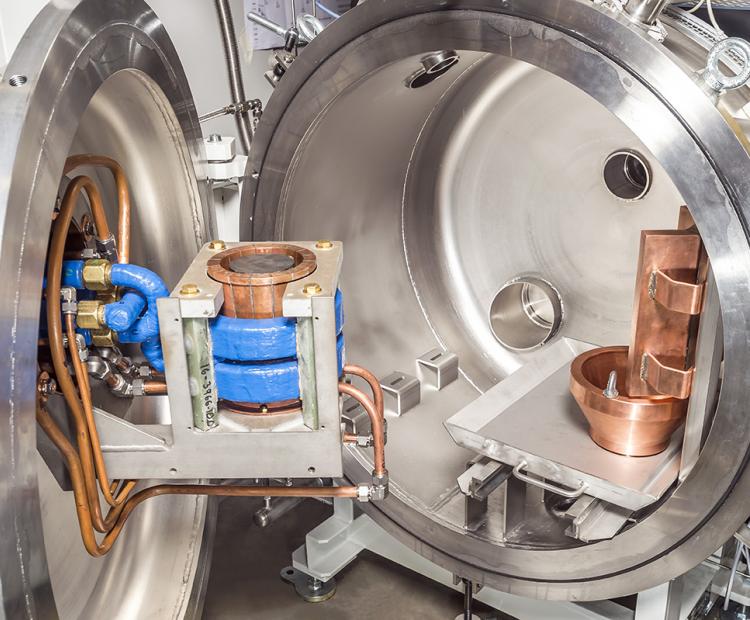
Chemical analysis and physical characterization
Simulation
Artificial intelligence to automatically identify metallic phases and microstructures
Our furnaces are equipped with multiple sensors that can feed into and/or validate numerical simulations
Metal/slag equilibrium measurements generate critical and difficult to obtain data for thermodynamic models
Equipment @M2P
VIM (Vacuum induction melter)
10 - 50 L melting capacity (20-400 kg depending on alloy)
Alloys: Fe, Al, Ni, Cu, Co, etc.
Refractory crucible • Ingot, sand mould and investment casting
Mould preheating and post-casting heat treatment
PAM-CHR (Plasma arc melter, cold-hearth refiner)
70 - 150 kg ingots: 10 or 15 cm Ø x 150 cm length
Alloys: Ti, TiAl, Nb, reactive/refractory
Raw materials: revert, turnings, powder, bars, virgin raw materials
ISM (Cold crucible induction melter)
0,9 L water cooled copper sectored crucible
Rapid sampling machine
Alloys: Fe, Ni, Ti, Zr, etc.
CHARACTERIZATION
Chemical analysis of liquid or solid metal by optical emission spectroscopy (OES, arcspark), X-ray fluorescence (XRF-WDX) or wet chemistry (ICP)
Oxygen activity measurement of liquid metal
Dissolved gas analysis: ONH, CS
Metallographic characterization (optical, SEM)
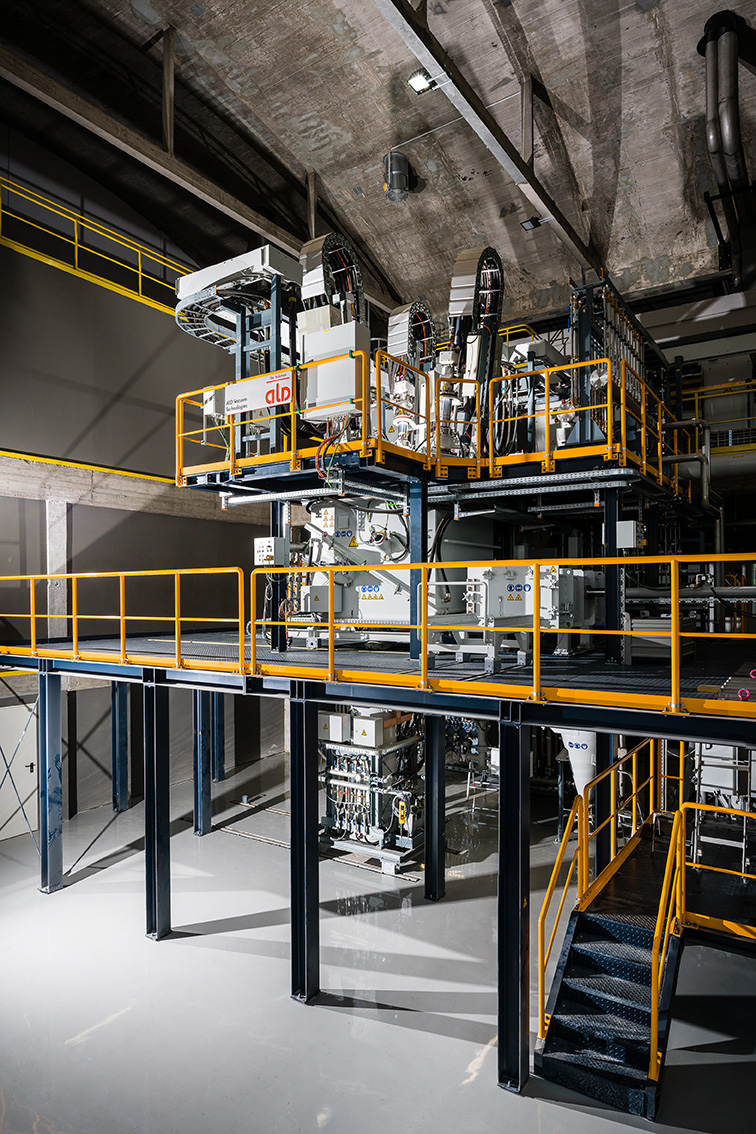
Applications
New alloy development
- Support for the industrialization of new alloys via pilot-scale melts
- Pre-series and prototype production
- Semi-industrial scale trials to optimize process parameters
Recycling
- Participation in the creation of a French recycling structure for aerospace grade titanium
- Evaluation of recycled materials characteristics and quality
- Melting tests to validate the compatibility of recycled materials with metal quality specifications
Production of ingots/electrodes for gas atomization
Participation in the development of a numerical model for PAM-CHR furnaces
Development of new and innovative melting and forming processes such as thixoforging
Principal markets: aerospace (engine parts), medical (implants), energy (nuclear, hydrogen, oil&gas), defence (marine, armory), transportation (automobile parts, motorsports, rail/train)
